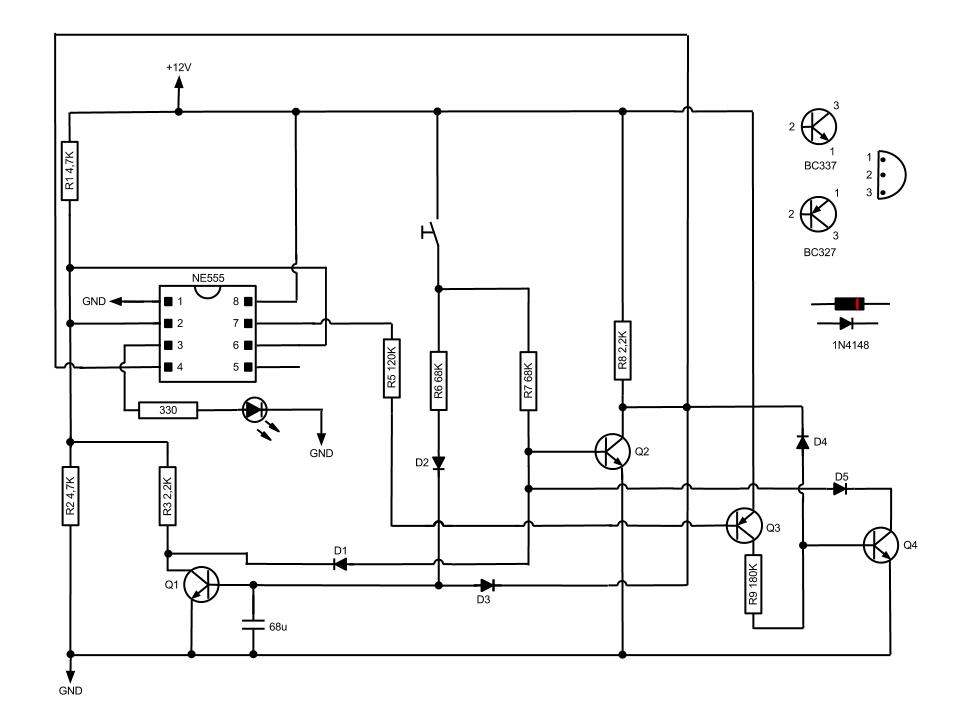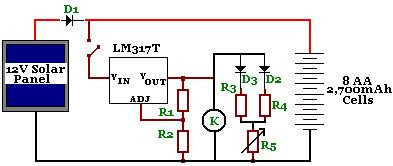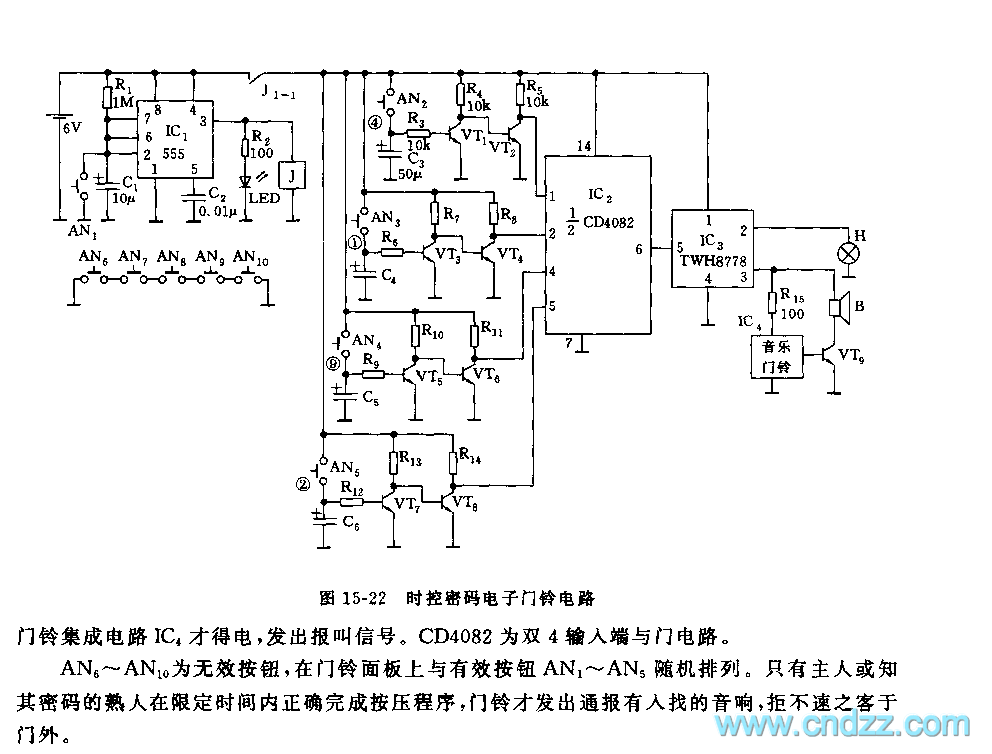
555 Momentary Switch Circuit

This circuit, based on the NE555 timer, activates and deactivates the IC output using a momentary switch. It functions similarly to a mechanical latching relay, but resets to its initial state when the power supply is turned off. This capability is often desired in automotive applications. No relay contacts are utilized; instead, the output is connected to an LED. Initially, when the momentary switch is not pressed, the output (pin 3) remains off because pins 2 and 6 are at half voltage. When the button is pressed, transistor Q1 is activated almost instantaneously due to the capacitor, while transistor Q2 remains off. Activating Q1 drives pins 2 and 6 to a low voltage, causing the output to go high. Pressing the button again activates Q2, which pulls pin 4 to low voltage (with the aid of a pull-up resistor), returning the circuit to its initial state.
The NE555 timer is configured in a bistable mode, allowing it to function as a flip-flop. In this configuration, the momentary switch serves as a trigger to toggle the state of the output. The circuit comprises two transistors (Q1 and Q2), a capacitor, and a pull-up resistor, which work together to create a latching effect without the need for mechanical relays.
When the momentary switch is initially pressed, the capacitor charges quickly, causing Q1 to turn on. This action pulls the voltage at pins 2 and 6 down, which in turn causes the output at pin 3 to go high, illuminating the LED. The high output state remains until the switch is pressed again. Upon the second press, Q2 is activated, which pulls pin 4 low, effectively resetting the circuit to its original state and turning off the LED.
The design is particularly suitable for applications where a temporary activation is required, such as in automotive lighting systems, where the driver may want to activate a light briefly without maintaining the switch in the on position. The absence of mechanical components not only reduces wear and tear but also allows for a more compact and reliable circuit design. The use of a pull-up resistor is critical as it ensures that pin 4 is held high when Q2 is off, preventing any unintended toggling of the output state. The overall simplicity and effectiveness of this circuit make it a valuable solution for various electronic applications.Based on NE555 this circuit turns on and off the IC output by a momentary switch. In other words it works as a mechanical latching relay, but the circuit backs to the start condition when you switch off the power supply. This feature is often required in automotive devices. No relay contacts are used, infact I connected the output to a led. Once t he momentary switch circuit is supplied the output (pin 3) keeps off because pin 2 and 6 are at half voltage. When the button is pressed Q1 turns on within a fraction of second because of the capacitor, while Q2 keeps off.
By switching on Q1 leads pin 2 and 6 to low voltage, then the output gets high. When the button is pressed again Q2 switches on and leads pin 4 to low voltage (I used a pull up resistor), then the circuit takes the start condition. 🔗 External reference
The NE555 timer is configured in a bistable mode, allowing it to function as a flip-flop. In this configuration, the momentary switch serves as a trigger to toggle the state of the output. The circuit comprises two transistors (Q1 and Q2), a capacitor, and a pull-up resistor, which work together to create a latching effect without the need for mechanical relays.
When the momentary switch is initially pressed, the capacitor charges quickly, causing Q1 to turn on. This action pulls the voltage at pins 2 and 6 down, which in turn causes the output at pin 3 to go high, illuminating the LED. The high output state remains until the switch is pressed again. Upon the second press, Q2 is activated, which pulls pin 4 low, effectively resetting the circuit to its original state and turning off the LED.
The design is particularly suitable for applications where a temporary activation is required, such as in automotive lighting systems, where the driver may want to activate a light briefly without maintaining the switch in the on position. The absence of mechanical components not only reduces wear and tear but also allows for a more compact and reliable circuit design. The use of a pull-up resistor is critical as it ensures that pin 4 is held high when Q2 is off, preventing any unintended toggling of the output state. The overall simplicity and effectiveness of this circuit make it a valuable solution for various electronic applications.Based on NE555 this circuit turns on and off the IC output by a momentary switch. In other words it works as a mechanical latching relay, but the circuit backs to the start condition when you switch off the power supply. This feature is often required in automotive devices. No relay contacts are used, infact I connected the output to a led. Once t he momentary switch circuit is supplied the output (pin 3) keeps off because pin 2 and 6 are at half voltage. When the button is pressed Q1 turns on within a fraction of second because of the capacitor, while Q2 keeps off.
By switching on Q1 leads pin 2 and 6 to low voltage, then the output gets high. When the button is pressed again Q2 switches on and leads pin 4 to low voltage (I used a pull up resistor), then the circuit takes the start condition. 🔗 External reference
Warning: include(partials/cookie-banner.php): Failed to open stream: Permission denied in /var/www/html/nextgr/view-circuit.php on line 713
Warning: include(): Failed opening 'partials/cookie-banner.php' for inclusion (include_path='.:/usr/share/php') in /var/www/html/nextgr/view-circuit.php on line 713





